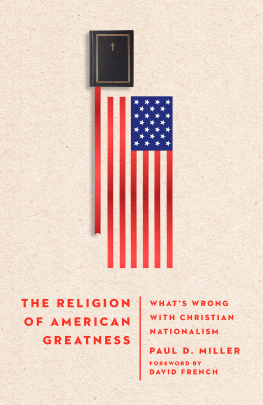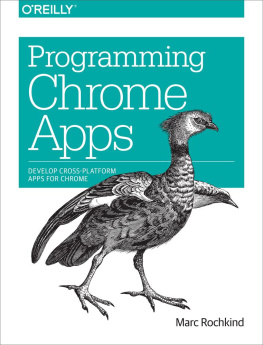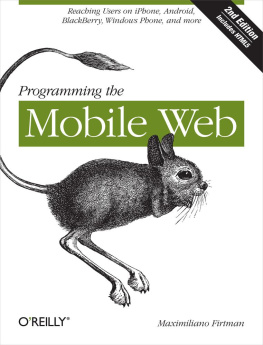The Imaginary App
Software Studies
Matthew Fuller, Lev Manovich, and Noah Wardrip-Fruin, editors
Expressive Processing: Digital Fictions, Computer Games, and Software Studies,
Noah Wardrip-Fruin, 2009
Code/Space: Software and Everyday Life,
Rob Kitchin and Martin Dodge, 2011
Programmed Visions: Software and Memory,
Wendy Hui Kyong Chun, 2011
Speaking Code: Coding as Aesthetic and Political Expression,
Geoff Cox and Alex McClean, 2012
10 PRINT CHR$(205.5+RND(1)); : GOTO 10,
Nick Montfort, Patsy Baudoin, John Bell, Ian Bogost, Jeremy Douglass, Mark Marino, Michael Mateas, Casey Reas, Mark Sample, and Noah Vawter, 2012
The Imaginary App,
Paul D. Miller and Svitlana Matviyenko, editors, 2014
The MIT Press
Cambridge, Massachusetts
London, England
2014 Massachusetts Institute of Technology
All rights reserved. No part of this book may be reproduced in any form by any electronic or mechanical means (including photocopying, recording, or information storage and retrieval) without permission in writing from the publisher.
Library of Congress Cataloging-in-Publication Data
The imaginary app / edited by Paul D. Miller and Svitlana Matviyenko.
p. cm. (Software studies)
Includes bibliographical references and index.
ISBN 978-0-262-02748-9 (hardcover : alk. paper)
ISBN 978-0-262-32080-1 (retail e-book)
1. Computers and civilization. 2. Mobile computingSocial aspects. 3. Application softwareSocial aspects. I. DJ Spooky That Subliminal Kid. II. Matviyenko, Svitlana, 1976
QA76.9.C66I35 2014
303.48'34dc23
2013044424
Contents
Benjamin H. Bratton
Sren Bro Pold and Christian Ulrik Andersen
Patricia Ticineto Clough
Robbie Cormier
an interview with Stephen Wolfram
Nick Srnicek
Dock Currie
Eric Kluitenberg
Anna Munster
Nick Dyer-Witheford
Vincent Manzerolle and Atle Mikkola Kjsen
Dal Yong Jin
Steven Millward
Lev Manovich
Thierry Bardini
Drew S. Burk
Dan Mellamphy and Nandita Biswas Mellamphy
an interview with Scott Snibbe
an interview with Ryan and Hays Holladay (Bluebrain)
Series Foreword
Software is deeply woven into contemporary lifeeconomically, culturally, creatively, politicallyin manners both obvious and nearly invisible. Yet while much is written about how software is used, and the activities that it supports and shapes, thinking about software itself has remained largely technical for much of its history. Increasingly, however, artists, scientists, engineers, hackers, designers, and scholars in the humanities and the social sciences are finding that the questions they face, and the things they want to build, require an expanded understanding of software. For such understanding they can call upon texts in the history of computing and new media, they can take part in the rich implicit culture of software. They also can take part in the development of an emerging and fundamentally transdisciplinary computational literacy.
This series uses and develops cultural, theoretical, and practice-oriented approaches to make critical, historical, and experimental accounts of (and interventions via) the objects and processes of software. It engages and contributes to the research of computer scientists, the work of software designers and engineers, and the creations of software artists. It tracks how software is substantially integrated into the processes of contemporary culture and society, reformulating processes, ideas, institutions, and cultural objects around their closeness to algorithmic and formal description and action. It proposes histories of computational cultures, and it works with the intellectual resources of computing to develop reflexive thinking about its entanglements and possibilities. It does this both in the scholarly modes of the humanities and social sciences and in the software creation/research modes of computer science, the arts, and design.
The Software Studies series aims to publish the best new work in a critical and experimental field that is at once culturally and technically literate, reflecting the reality of todays software culture.
Preface
Paul D. Miller
What happens when you first think of an app? There is an immediate sense of reducing the thoughts at the edge of what you envision to an icon, a logo, a square, a circle, a widgetthe basic interpretation of thought into action, of sense into sensation. The logos and icons that symbolize the surface touch of an irresistible logic of late capitalism are all on the surface of a screen that fits in your hand.
Imagine that you have on your screen an icon that was posted on Apples App Store on August 5, 2008 and removed the next day. Called I Am Rich, it is an iOS Application created by Armin Heinrich. It is what economists call a Veblen gooda dematerialized form of commodity named after Thorstein Veblen, the American economist and sociologist who coined the term conspicuous consumption. I Am Rich, having been presented as a work of art with no hidden function at all, occupies a fuzzy and imprecise area of economic theory. But so does most art.
Heinrichs creation set the tone for an ecosystem governed by the laws of perception rather than the bricks and mortar approach of the norms of economics. It does nothing except display on the screen of your iPhone an icon that suggests that you have wealth and status.
What does a Veblen good have to do with dematerialized stuff like apps? It is all about perception. If everybody has it, it should be free. But the laws of scarcity get turned upside down in the realm of software. Software acquires more utility as more people use it.
An app is a software equivalent of a paradox of valuea kind of pastiche of how we assign meaning in a world where digital currencies like Bitcoin and status symbols like painting, sculpture, handbags, cars, and high-end wines hold sway. In fact, these consumer goods are opposite of what the norms of economic theory would convey. Decreasing their price decreases peoples desire to buy them, because they are then viewed as cheap and no longer exclusive. They go against the logic of the dictum that demand moves conversely to price. But a painting or a sculpture is a reflection of a collectors impulse to create scarcity. If everyone has a Picasso painting, a Picasso painting isnt very interesting. But if everyone uses Apples App Store or Googles Play Store to download utilitarian or useless apps, they still create a certain kind of cumulative, incremental value based not on perceived value but on the ambiguous numbers of what Pierre Bourdieu liked to call cultural capital.
I Am Rich is a conspicuous consumption app that, when activated, shows a red gem and displays, in large text, this mantra:
I am rich
I deserve it
I am good,
healthy &
successful
Apple removed it from the App Store after 24 hours. Priced at $999.99 in the United States and 799.99 in Europe, it generated thousands of dollars in sales in those 24 hours.
I like to think of I Am Rich as a perfect example of some of the themes of this anthology. It was fictional, and it served no purpose except to portray a perception of status, but the fact that it was removed and the fact that it left a media trail of articles describing its status after it had been erased point to what Andr Malraux called le muse imaginairea museum without walls, a gallery of perceptions connected by algorithms instead of curators. In fact, as longer battery life, low latency response times, and technologies like MIMO Wi-Fi transform the mobile digital media experience into truly immersive ubiquitous computing, issues like this will come to the forefront. That is what
Next page










